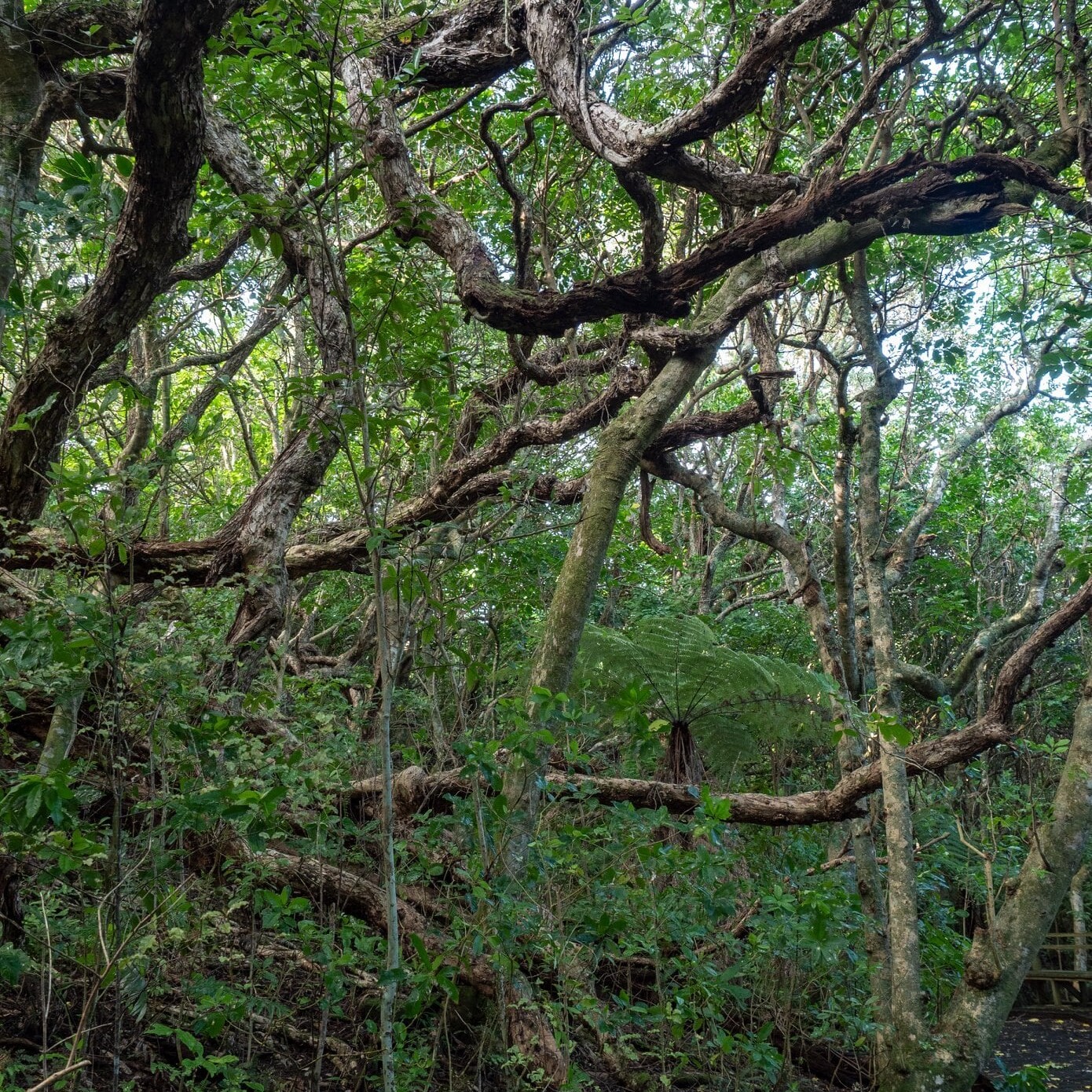Nature’s Carbon Catchers: How Pōhutukawa Trees Help Our Planet
Author: Stacey Balich, volunteer guidePhoto credit: Pōhutukawa photos, Jonathan Mower
Did you know that big old trees like the pōhutukawa are working quietly every day to keep our planet healthy? These trees are more than just beautiful, they’re nature’s carbon catchers.
When trees grow, they absorb a gas from the air called carbon dioxide (CO₂). This gas is made up of carbon, a natural building block found in all living things, people, animals, and plants included. When trees grow, they soak up carbon from the air and use it to build their trunk, branches, and leaves. This is called being a carbon sink, it’s like the tree is a sponge, soaking up extra carbon! This helps keep the Earth cooler, because too much carbon in the air can make the planet warmer than it should be. So, trees aren’t just growing, they’re helping cool the planet.
And there’s more! As trees take in carbon dioxide, they also release oxygen, which we all need to breathe. That means every tree is helping us in two big ways: by cleaning the air and by giving us the oxygen we need to live.


This incredible pōhutukawa has stood through centuries of change, regenerating itself after falling, and now grows in a graceful curve along a hillside spur.
One special pōhutukawa tree on Tiritiri Matangi Island, nestled beside the Kawaura Track, is estimated to be over 1,000 years old. This incredible tree has stood through centuries of change, regenerating itself after falling, and now grows in a graceful curve along a hillside spur. It’s a living link to the original coastal forest that once covered the island, long before people arrived in Aotearoa.
This ancient Metrosideros excelsa is more than just a tree, it’s a powerful symbol of resilience, renewal, and natural history. But it’s also a climate hero. A mature pōhutukawa can store up to 8 tonnes of carbon dioxide in its lifetime, that’s like stopping a car from driving the entire length of New Zealand from Cape Reinga to Bluff and back more than ten times!

Tiritiri Matangi’s forest restoration is another amazing story. In the 1980s, volunteers planted around 280,000 native trees to bring the island’s forest back to life. These trees have absorbed roughly 280,000 tonnes of carbon dioxide—that’s equivalent to the carbon emissions from heating and powering around 30,000 average New Zealand homes for a year!
We do our part to keep Tiritiri sustainable, too. We use solar panels for power, rainwater tanks for water, and e-bikes to get around the island. While we still need to bring over some fuel for the ute and LUV, we’re working to reduce that by using the e-bikes more and more.

Around 300 million years ago, Earth’s oxygen levels were much higher, about 35%, compared to today’s 21%. During this period, some insects grew enormous, with dragonflies reaching the size of seagulls! Higher oxygen made it easier for insects to grow large because they absorb oxygen directly through their skin. Today, Earth’s atmosphere contains just the right amount of oxygen for life as we know it, too little, and breathing becomes impossible; too much, and it could cause harm. Just like carbon dioxide, balance is key. Nature does an amazing job of maintaining this balance, and it’s up to us to help keep it steady.
Three Easy Ways You Can Help
- Walk, bike, or catch the bus instead of using the car all the time—it puts less carbon into the air.
- Turn off lights and electronics when you’re not using them to save energy.
- Plant trees and care for nature—trees soak up carbon and keep the air fresh and clean. Support or volunteer in local restoration projects like the one on Tiritiri Matangi
- Grow some of your own food – even herbs in pots reduce transport emissions.
Every time we protect trees, care for forests, and choose lower-carbon ways of living, we’re helping our planet stay cooler, cleaner, and healthier for the future. Just like the ancient pōhutukawa on Tiritiri Matangi, we all have a role to play.
